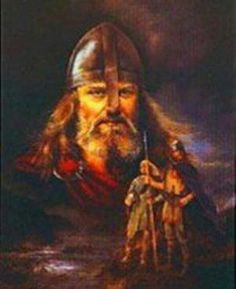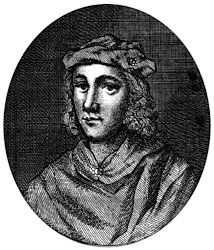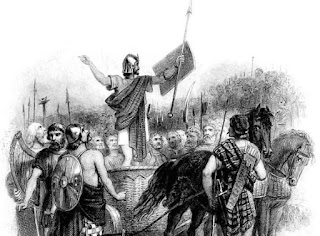James Clerk Maxwell
Scottish Gentleman Genius
He was seen as the gentleman genius, a scientist who in his own way was as brilliant and influential as Charles Darwin and Albert Einstein.
Regarded as one of the greatest and cleverest men Scotland has ever produced, James Clerk Maxwell was writing scientific papers at an age when most boys would be kicking a ball around in the street.
Sadly, however, his scientific brilliance never achieved the recognition it deserved – unlike many of his Victorian contemporaries, he was never granted a peerage or a knighthood, and his name is far from universally known.
Maxwell's great genius lay in his development of a grand theory of electromagnetism. The principles of this subject define how every piece of modern electrical equipment, from TV through to radar and telephone, behaves.
Maxwell also carried out important work in other areas of science, such as the behaviour of molecules and the principles of colour vision. His talents were recognised by his fellow scientists but, because many of his theories were complex, the public never realised their importance.
James Clerk Maxwell was born in 1831 near Castle Douglas in Kirkcudbrightshire. His father's name was simply Clerk -he added Maxwell after inheriting a run-down estate in the area.
Maxwell's mother died when he was just eight and, after a spell being taught by private tutors, he was sent to Edinburgh Academy, where he received a classical education in the English rather than Scottish tradition.
By the time he was 16, James had moved on to Edinburgh University, where he was taught by two of the most famous professors of his day - JD Forbes, Professor of Natural Philosophy, and Sir William Hamilton, who held the chair of Logic and Metaphysics.
Both men stimulated Maxwell's already brilliant mind, encouraging him to develop a forensic style of thinking and to probe and question scientific principles which had until then been considered as fact.
He then moved south of the border to further his studies at Trinity College in Cambridge. He didn't enjoy the experience, but developed his expertise in electromagnetics and then moved to take the Chair of Natural Philosophy at Marischal College in Aberdeen.
Maxwell was regarded as an excellent teacher at Aberdeen and was popular with the students. He also met and married the Principal's daughter, Kathleen Dewar, who was seven years his senior.
After this, he moved back south again to take up an offer of a professorship at King's College in London. His new job gave him the chance to spend more time on the research which was eventually to define him as a brilliant scientist.
He carried out experimental measurements on behalf of the British Association for the Advancement of Science and completed two more major studies in electromagnetism. However, he didn't enjoy his time in London and yearned to return to his native Scotland. He did so when he was 34, deciding to retire on the family estate in Galloway.
It was a remarkably young age to give up work, but Maxwell wasn't attracted by the lure of money or even in advancing his career.
He was, however, interested in scientific research for its own sake, and he pressed on with this.
Because he no longer had to teach, time was freed up for him to start work on the book which was to make his name famous in scientific circles throughout the world - his on Electricity and Magnetism.
The book, finally published in 1873, was one of the most important scientific works of the 19th century.
It sparked off a worldwide interest in electromagnetics with students of the subject keen to try to take his ideas further
Maxwell's book advocated the so-called field theory which suggested that electromagnetic action took place in the space between electric wires rather than as some scientists believed at a distance from them.
Maxwell's theory was extremely important, and provided a starting point for further work on the subject.
His assertion that electromagnetic waves could be generated in a laboratory, for instance, led on to the development of radio.
His work is now thought of as having had the greatest influence of a any individual scientist on 20th century physics. It paved the way, for instance, for Einstein's theory of relativity, which established the relationship between mass and energy.
During a remarkable life, Maxwell also made other important breakthroughs. For instance, he managed to identify the correct structure of Saturn's Rings - his research was proved correct more than 100 years later when the Voyager probe went to the planet.
In 1871 Maxwell accepted an academic post south of the Border again. He was lured back to become the first professor of the Cavendish Laboratory in Cambridge, which was to become one of the world's most important centres for scientific research.
The Cavendish formally opened in 1874, after Maxwell had made major contributions to its design. However, his association with it was not to last for long.
In 1877 he began to feel unwell and was diagnosed as having abdominal cancer - the illness which had killed his mother. He died in 1879 in Cambridge, though he was buried in a church near his beloved estate in Kirkcudbrightshire.
There are few physical memorials to James Clerk Maxwell, and he has never achieved the public recognition his brilliance deserved.
But his memory lives on in the minds of the world's most brilliant scientists, who to this day use his theories to keep pushing the boundaries of their profession forward.











Comments
Post a Comment